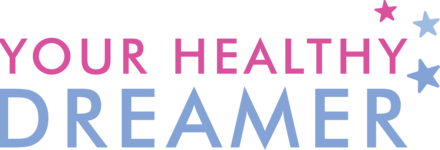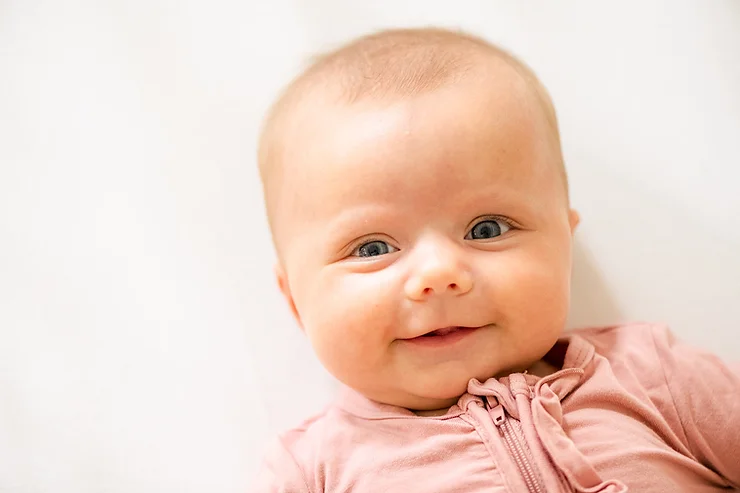Practicing Independent Sleep with your Newborn
Once your baby is smiling in response to your loving face, it’s a big sign that they are becoming real smart real fast! This adorable sign usually emerges between 6-8 weeks from their estimated due date.
Once you’re seeing smiles, it’s a good idea to begin allowing them to practice falling asleep on their own.
If you’re not yet seeing those social smiles, read more about how to facilitate healthy sleep for your baby now.
You can do this gradually and progress at your own comfort level, but the idea is to start placing them down for naps and bedtime while they’re still awake, allowing them to take themselves all the way there by themselves.
“Practice” is a key word here because some babies and parents will take to this easier than others, and that’s OK. Honestly, there is no rush, but if sleep is a priority in your family, then this is the earliest time that I encourage you to begin practicing. The goal is to offer practice on a regular basis to help them master this new and increasingly age appropriate skill.
Start with a simple and predictable nap or bedtime routine that ends with your baby lovingly placed into their safe, consistent, dark, quiet, and cool sleep space while they are still awake, followed by the lights going off fully, and you leaving the room. I recommend allowing a bit of fussing as they practice falling to sleep, but stick with what you’re comfortable with. If your baby falls asleep, then you have reason to celebrate! Alternatively, if your baby becomes very upset, it’s absolutely OK to go to them, re-soothe in whatever way works and dust your shoulder off. Celebrate your bravery in allowing them to practice something new and hard, recognize that learning new things takes time, and plan to offer practice again at the next sleep period, or tomorrow, or next week! This window between 2 and 4 months of age is the perfect time for low stakes practice.
If your baby is having a really hard time falling asleep independently, it could be that they need more practice or the room is not dark enough. It’s also worth considering that they are being kept awake for too long between sleep periods. Babies become overtired quite easily, and faster than many parents realize. Aim to offer sleep within 45 minutes to one hour since the last time they woke. Otherwise, a baby who has been awake for too long will have a much more difficult time leaning into sleep or learning a new skill like falling asleep independently. When first starting out, I recommend offering practice at bedtime and/or the first nap of the day. The drive to sleep will be the strongest during these times!
“Drowsy but awake” is the ideal state for a young baby to be in, so they can drift off to a peaceful sleep without a struggle. However, as your baby gets older and more aware of the fascinating world around them, the ideal state moves away from “Drowsy but awake” and instead we aim for “Fully awake and calm”.
At 6-8 weeks of age (from Estimated Due Date) your baby is becoming real smart, real fast. They are making simple connections, so it’s helpful to start introducing the positive sleep connections that will serve them well in order to build that strong healthy sleep foundation from the ground up, and minimize the need for formal sleep training later on.
However, if working on independent sleep does not feel right to you or doesn’t align with your parenting goals, that’s OK too. Luckily, it’s never going to be too late to teach healthy sleep habits.
For more information on how to facilitate healthy sleep for your socially smiling newborn, read my article titled, Newborn Sleep: 2-4 Months.

